Nakajima Aircraft - At the front of the [Ha-54] engine, the crankshaft drove a propeller gear reduction and the cooling fan. The planetary gear reduction turned the propeller at .414 times crankshaft speed. Both single-rotation and contra-rotating propellers were considered, with the final decision in favor of six-blade (or possibly eight-blade) contra-rotating propellers that had a diameter of 14.8 ft (4.5 m).
The [Ha-54] engine would be supported by a series of mounting rings that connected to the engine at its center and rear. When Nakajima started to develop their own engines in the late 1920s, their designation system consisted of their name and the engine type followed by the engine model letter.
Nakajima Aircraft
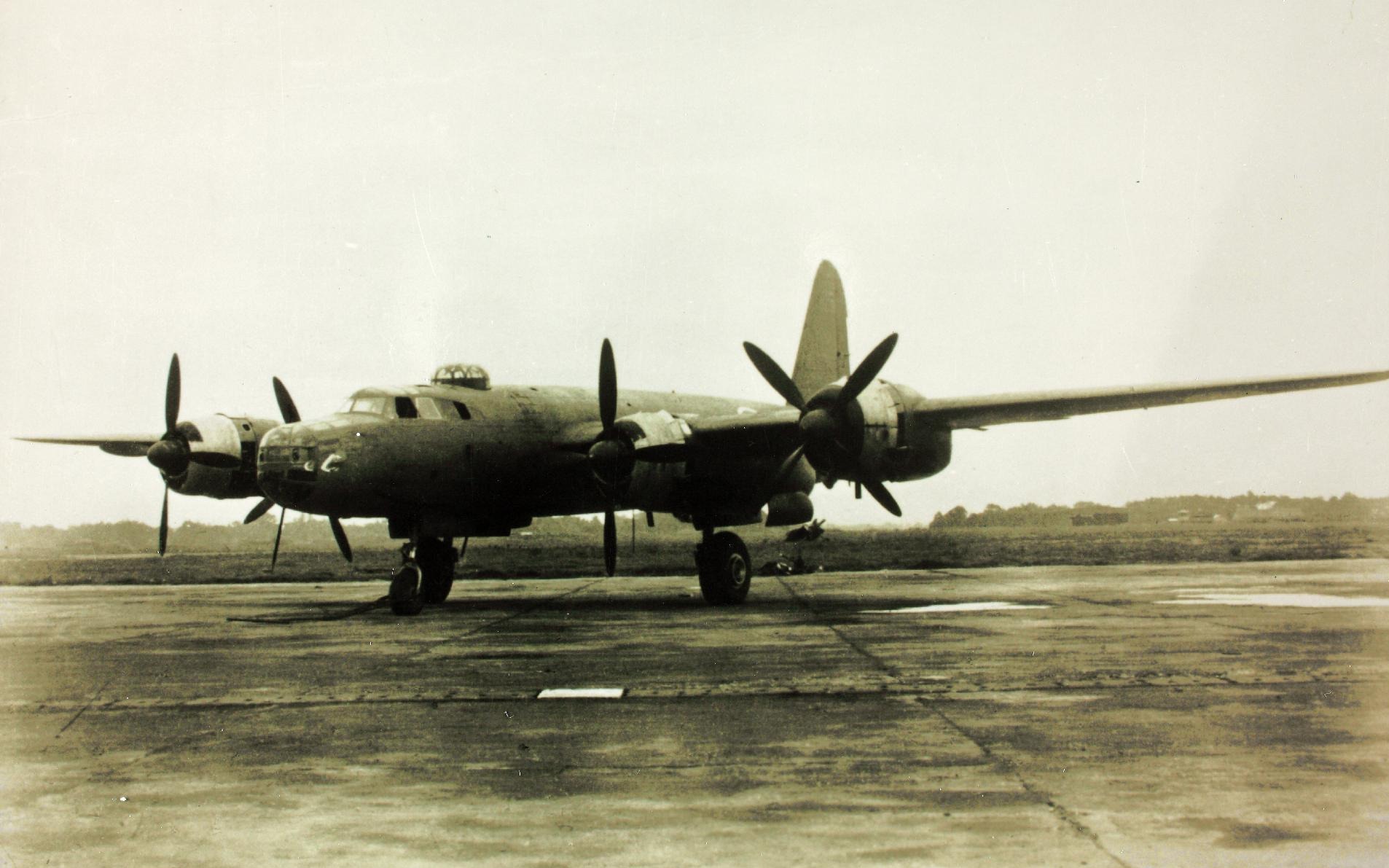
As an example, the designation “NAL” represented Nakajima Air-cooled L model. When Nakajima started to develop a new class of high-power engines in the early 1940s, the focus was on air-cooled engines. Subsequently, the letter “N” and the engine type were dropped from the engine designation system.
Kikka And Messerschmitt Me Compared
A new letter was used to designate the next generation of engines, followed by the engine model letter. As an example, the designation “BH” stood for B generation H model. The question of cooling the [Ha-54] was never entirely resolved, and development of the engine was forecasted to take too long.
By January 1944, work on the [Ha-54] had stopped, and it is unlikely that a complete engine was ever built. With the the cancellation of the 5,000 hp (3,728 kW) [Ha-54], a scaled-down version of the Project Z aircraft was designed and powered by [Ha-44] engines, which had been developed to 2,500 hp (1,864 kW
). The new aircraft, designated Nakajima G10N Fugaku (Mount Fiji) was slightly smaller but still possessed the same, six-engine configuration as Project Z. By the summer of 1944, all of Japan's resources were needed to protect the homeland, and the prospect of
a long-range bomber attacking the US mainland was out of reach. The G10N Fugaku was cancelled, and all work stopped on its engines. On December 6, 1917, Chikuhei Nakajima founded one of the first aircraft manufacturing companies in Japan.
After World War Ii
Originally known as the Japanese Airplane Research Institute (Nihon Hikoki Kenkyūsho), the company went through a few name changes and was reorganized as the Nakajima Aircraft Company, Ltd (Nakajima Hikōki KK) in December 1931, with Chikuhei Nakajima as its chairman.
At the onset of World War II, Nakajima felt that the United States had vast industrial resources and that the attack on Pearl Harbor would have dire consequences for Japan. Nakajima believed that the only way to ensure a Japanese victory was for Japan to have a reliable method to consistently attack the US mainland.
Such attacks would require the US military to divert offensive forces to defend and protect the US. Although several different designs and configurations were investigated, the Project Z aircraft that entered development was a six-engine, long-range bomber of all metal construction.
The proposed aircraft had a wingspan of 213.2 ft (64.98 m), a length of 147.6 ft (44.98 m), and a height of 28.8 ft (8.77 m). Project Z had an empty weight of 143,300 lb (65,000 kg) and a maximum weight of 352,739 lb (160,000 kg).

The bomber's top speed was 422 mph (679 km/h) at 32,808 ft (10,000 m). Project Z had a maximum range of 11,185 miles (18,000 km) and a ceiling of 49,213 ft (15,000 m). In 1942, Nakajima made his thoughts known to the Imperial Japanese Army (IJA) and Imperial Japanese Navy (IJN), but neither service gave Nakajima much consideration or any support.
Frustrated, Nakajima used his company's own resources to design a large bomber capable of striking the US mainland from Japan. Nakajima designated his bomber design Project Z (or Z Airplane). After months of research, Nakajima again approached the IJA and IJN in April 1943 with his Project Z proposals.
The IJA and IJN were more receptive, but there was no consensus between the services on the aircraft's design, specifications, or mission. The IJA and IJN submitted an updated proposal to Nakajima in June 1943, and through the remainder of 1943, Nakajima worked to solidify the Project Z aircraft design.
The [Ha-54] engine carried the Nakajima designation D-BH, for Double-BH. It was also designated Nakajima Ha-505 by the IJA but had no known IJN designation. Developed under chief designer Kiyoshi Tanaka, the engine was a 36-cylinder, air-cooled radial with two-stage supercharging.
The [Ha-54] was comprised of two [Ha-44] engine sections bolted together via an intermediate section. The two engine sections formed a single four-row radial engine with nine-cylinders in each row. The crankshafts of the two engine sections were directly joined, and neither engine section could operate without the other.
However, as the war progressed and newer more effective Allied aircraft were produced, new solutions would need to be created to deal with them. Thus, the final generation of Nakajima fighters was produced. The most famous of these would be the Nakajima Ki-84 Hayate alongside the less successful J5N, Ki-87, Ki-115 and Ki-116 prototypes.
However, Nakajima had also delved into the world of jet propulsion, creating the Nakajima J9Y Kikka. Nakajima leadership assigned the project to engineers Kazuo Ohno and Kenichi Matsumura. As the war to deteriorate for Japanese forces, Japanese naval pilots launched the first suicide missions using aircraft in October 1944. Several aircraft manufacturers turned to designing aircraft specifically for use during suicide missions, including the Nakajima Kikka continued.
Ohno and Matsumura led the design as it developed an all-metal aircraft except for the fabric-covered control surfaces. The designers planned to hinge the outer wing panels to fold up so that ground personnel could more easily hide the aircraft in caves.
They mounted the jet engines in pods slung beneath each wing to make it easier to install and test different engines. Three different engines were tried before the designers settled on the Ne-20, an engine that drew heavily from the German BMW 003.
Japan's first aircraft manufacturer, it was founded in 1918 by a naval engineer, Chikuhei Nakajima, and a textile manufacturer, Seibei Kawanishi as Nihon Hikoki (Nippon Aircraft). In 1919, the two founders split and Nakajima bought out Nihon Aircraft's factory with tacit help from the Imperial Japanese Army.
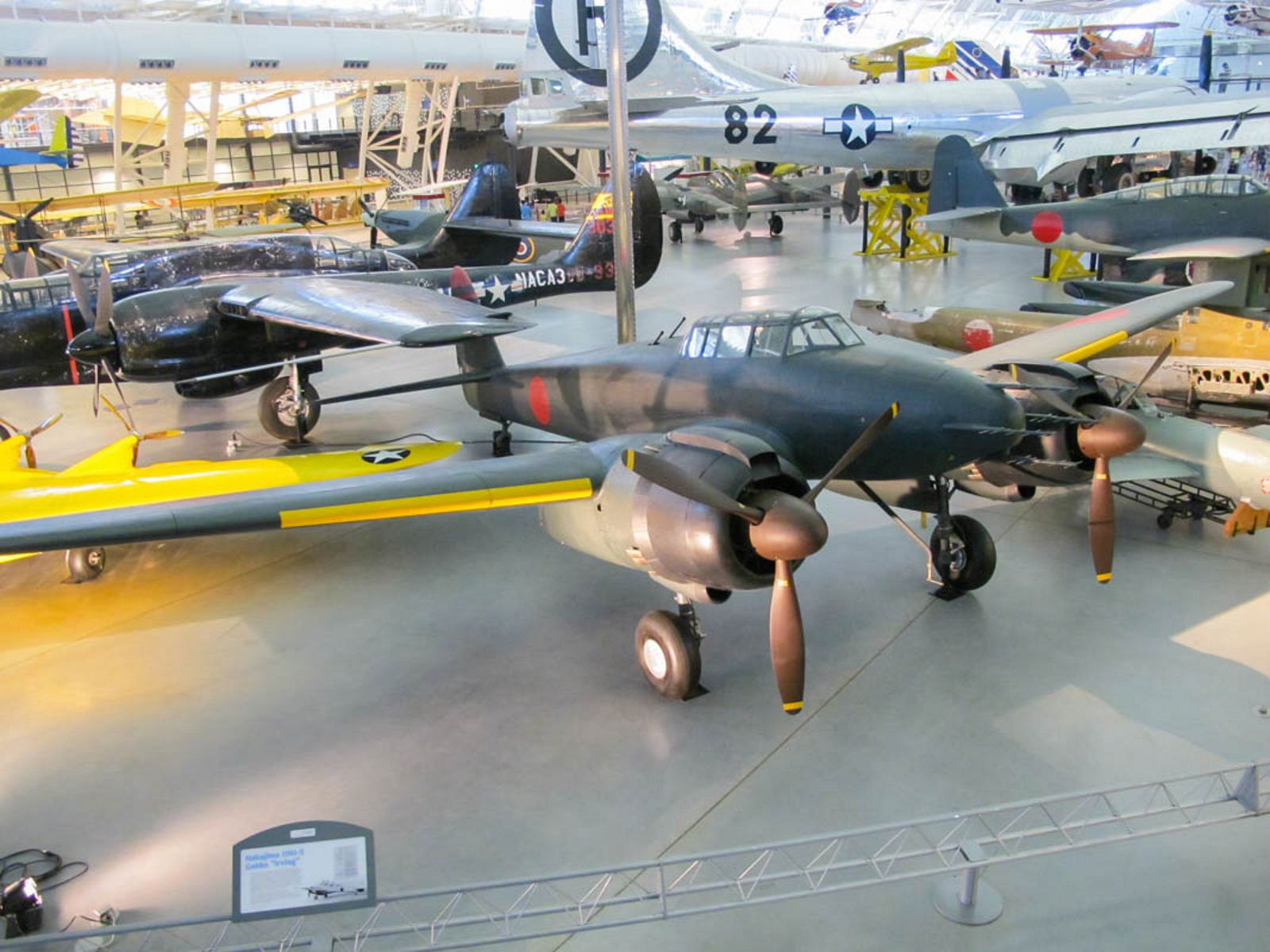
The company was renamed Nakajima Aircraft Company in 1919.[1] Some sources state a low pressure fuel injection system was planned for the [Ha-54] engine. Other Nakajima engines injected the fuel directly before the impeller at 14 psi (.97 bar).
However, a different fuel injection point may have been selected to avoid the constant presence of a volatile air/fuel mixture in the annular induction ring at the center of the engine. Anti-detonation injection was also available for takeoff or emergency power.
Experimentation with turbojet engine technology had begun in Japan as early as the winter of 1941-42 and in 1943, a Japanese technical mission to Germany selected the BMW 003 axial-flow turbojet for development in Japan. A large cargo of engines, engineering plans, photographs, and tooling sailed for Japan by submarine but vanished at sea.
However, one of the technical mission engineers had embarked aboard another submarine and arrived in Japan with his personal notes and several photographs of the BMW engine. The Naval Technical Arsenal at Kugisho developed the Ne-20 turbojet based on this information.
What an enormous engine! It would've been a pain to service. Looking at its mounting system, what a bear it would've been to replace one. Have you thought about doing an article about the Ha-44 18-cylinder engine?
I realize it is a pain to find information on Japanese engines, but it could be an interesting article. After Japan's defeat in World War II the company had to close down since production and research of aircraft was prohibited by the Supreme Commander of Allied Powers.
This had a severe impact on Nakajima because it was one of the two largest aircraft manufacturers, together with Mitsubishi Heavy Industries (MHI). Unlike MHI though, it was not diversified into shipbuilding and general machinery, and so, had to dissolve into a number of spin-off companies set up by former managers, engineers, and workers.
As a result, leading aeronautical engineers from NAC, such as Ryoichi Nakagawa, helped transform Japan's automobile industry.[1] The final version of the original Nakajima Project Z bomber with its six [Na-54] engines. Development of the [Na-54] was forecast to take too long, so [Na-44] engines were substituted, and the aircraft was scaled-down as the Nakajima G10N Fugaku.
As Japan's prospects for an offensive victory faded, the project was cancelled, and resources were reallocated to defense. The final cooling configuration involved an engine-driven fan at the front of the cowling. Air was ducted through the cooling fins of the front engine section's cylinders.
The air then exited cowl flaps at the center of the engine cowling. Separately, air was ducted over the cylinders of the front engine section and through the cooling fins of the rear engine section's cylinders.
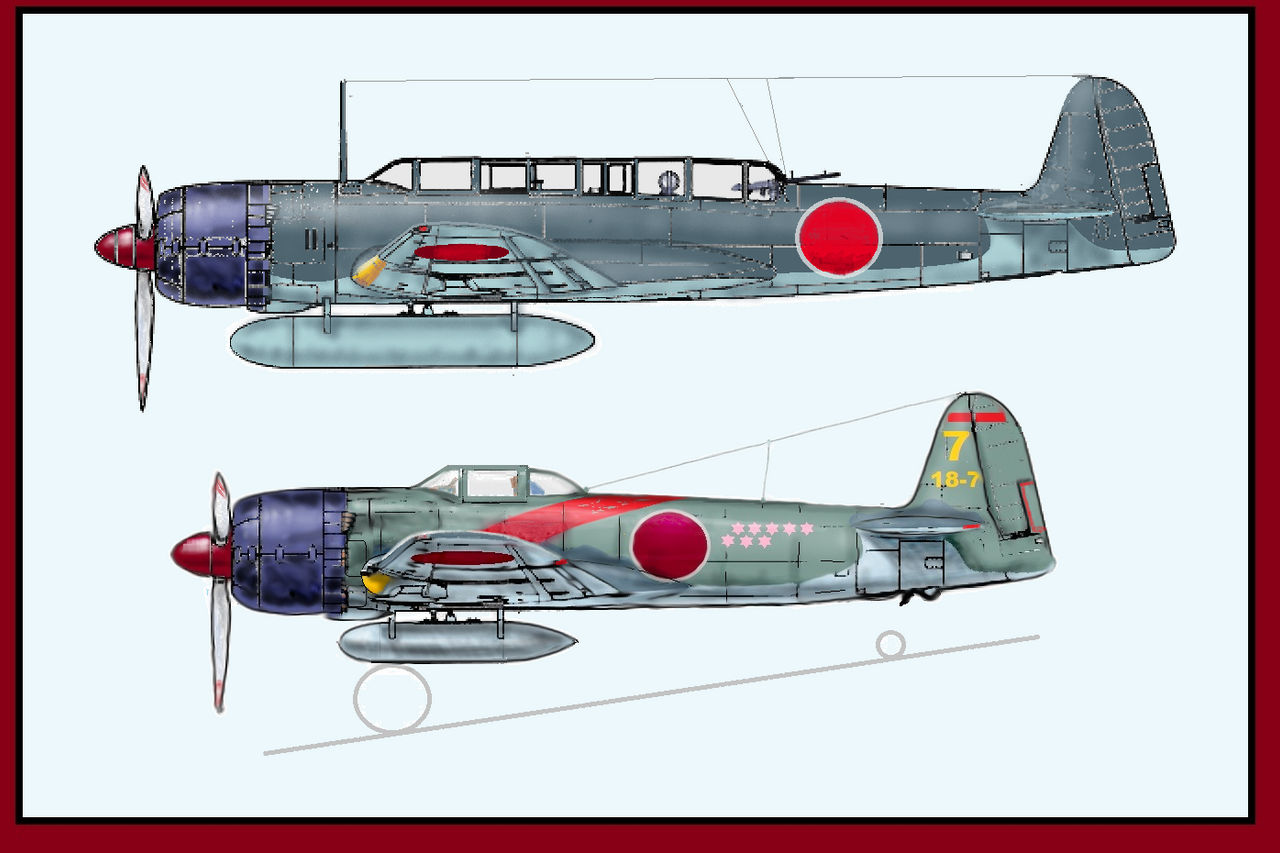
This air then exited via cowl flaps at the rear of the engine cowling. The company was reborn as Fuji Heavy Industries, maker of Fuji Rabbit scooters & Subaru automobiles, and as Fuji Precision Industries (later renamed as Prince Motor Company which merged with Nissan in August 1966), manufacturer of Prince Skyline and Prince Gloria.
Earlier this year, our collections staff at the Udvar-Hazy Center, in Chantilly, Virginia, moved the Nakajima Kikka from beneath the wing of the Sikorsky JRS flying boat in the Mary Baker Engen Restoration Hangar and out onto the floor beneath the Boeing B-
29 Enola Gay. Moving the Kikka provides an opportunity to bring visitors closer to the last known example of a World War II Japanese jet aircraft and the only Japanese jet to takeoff under its own power—it also opened up space in the Hangar so that our team could install netting
to deter birds. In August 1943, Nakajima distributed his thesis, “Strategy for Ultimate Victory,” to IJA and IJN officials and to prominent politicians. The thesis outlined strategic use of Project Z bombers to attack industrial targets in the US.
The bombers could fly from Japan to Germany and strike targets in the western US as well as industrial areas in the mid-western states. Once in Germany, the bombers would be rearmed and refueled to make the return trip to Japan, again striking the US.
The attacks, combined with their effect on production, was predicted to halt the US advance against Japan and aid in the defense of Germany. Wingspan: 10 m (32 ft 10 in) Length: 8.1 m (26 ft 8 in) Height: 3 m (9 ft 8 in) Weights: Empty, 2,300 kg (5,071 lb) Gross: 4,080 kg (8,995 lb) :
(2) Ne-20 axial-flow turbojets, 475 kg (1,047 lb) thrust The heritage of Nakajima's radial engines lies in licenses the company acquired to produce the Bristol Jupiter, Pratt & Whitney R-1340 Wasp, Wright R-1820 Cyclone, and Gnome-Rhône 14M.
Nakajima obtained the Jupiter license in 1925, the Wasp license in 1929, the Cyclone license in 1933, and the 14M license in 1937. While Jupiter engines were produced, the Wasp and Cyclone licenses were obtained to gain knowledge, and Nakajima did not produce those
engines. Many Nakajima radial engines used a 146 mm bore, which directly corresponded to the Jupiter's 5.75 in bore, and several Nakajima personnel spent a few months in the US being instructed by Wright as part of the license agreement.
The general construction of Nakajima radials resembled a combination of Bristol, Pratt & Whitney, and Wright engines, and Nakajima engineers consistently incorporated their own thoughts and ideas into their engines. Nakajima tests indicated that cooling the [Ha-54] engine would be difficult.
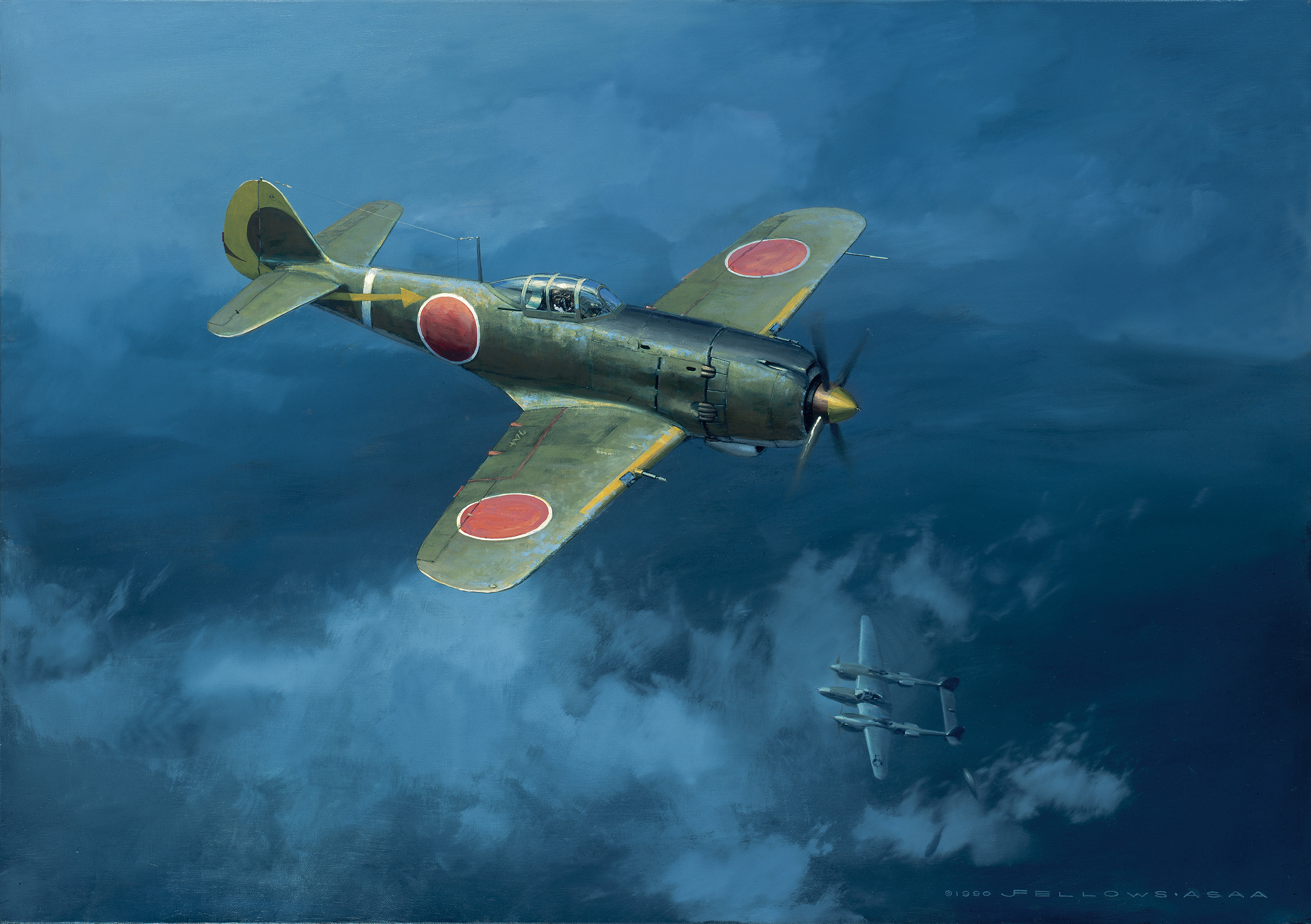
This model shows one of the final cooling configurations and matches the above drawing. Air flowed through the cylinders of the front engine section and exited at the center of the engine. Air that flowed over the front cylinders was directed down to flow through the cylinders of the rear engine section.
During the war, the Nakajima Aircraft Company produced aircraft for many different purposes and thus was one of the main suppliers of military vehicles during the war. Furthermore, the company owned several manufacturing facilities across mainland Japan from which to produce its products.
This model of the [Ha-54] illustrates the significant structure proposed to mount the engine. Such a mounting system would make engine maintenance very difficult, with the entire engine needing to be pulled to change a cylinder on the rear engine section.
Note the exhaust collector ring and its outlet, which would lead to a turbosupercharger. After World War II, the Nakajima Aircraft Company became the Fuji Industrial Company, Ltd. (Fuji Sangyo KK). In July 1953, the company merged with four others to form Fuji Heavy Industries, Ltd.
(Fuji Jūkōgyō Kabushiki-gaisha). Fuji Heavy Industries manufactured Subaru automobiles and supplied equipment for the aerospace and transportation industries. In April 2017, Fuji Heavy Industries was renamed the Subaru Corporation. Such a massive aircraft required very powerful engines;
however, no engine in Japan had the power that Project Z required. To solve this issue, Nakajima decided to make a power plant that could support Project Z by coupling together two existing [Ha-44] engines. The [Ha-44] was the most powerful engine that Nakajima was developing, and the new combined engine for Project Z was designated [Ha-54].
The Kikka took cues from the German Messerschmitt Me 262 fighter. When Germany began to test the jet-propelled Messerschmitt Me 262 fighter in 1942, the Japanese air attaché to Germany witnessed a number of its flight trials.
The attaché's enthusiastic reports eventually led the naval staff in Japan to direct the Nakajima firm in September 1944 to develop a twin-jet, single-seat, aircraft similar in layout to the Me 262. The first fighter aircraft developed by Nakajima during the war was the Nakajima A1N and its successor the Nakajima A2N.
Also produced alongside them were the Nakajima Type 91 fighter, Ki-11, Ki-12, and Ki-8 prototypes, Nakajima A4N, and finally the Nakajima Ki-27. From that point on, the aircraft development of Nakajima skyrocketed, with more maneuverable and more deadly aircraft being produced at an increased pace.
The first of these next generation fighters which would quickly become the frontline Japanese planes of the early war were the Nakajima Ki-43, Nakajima A6M2-N, and Nakajima Ki-44 as well as the Nakajima Ki-62 prototype. A less common addition to these second generation aircraft was the Nakajima J1N Gekkou, which was developed as a bomber escort/night fighter.
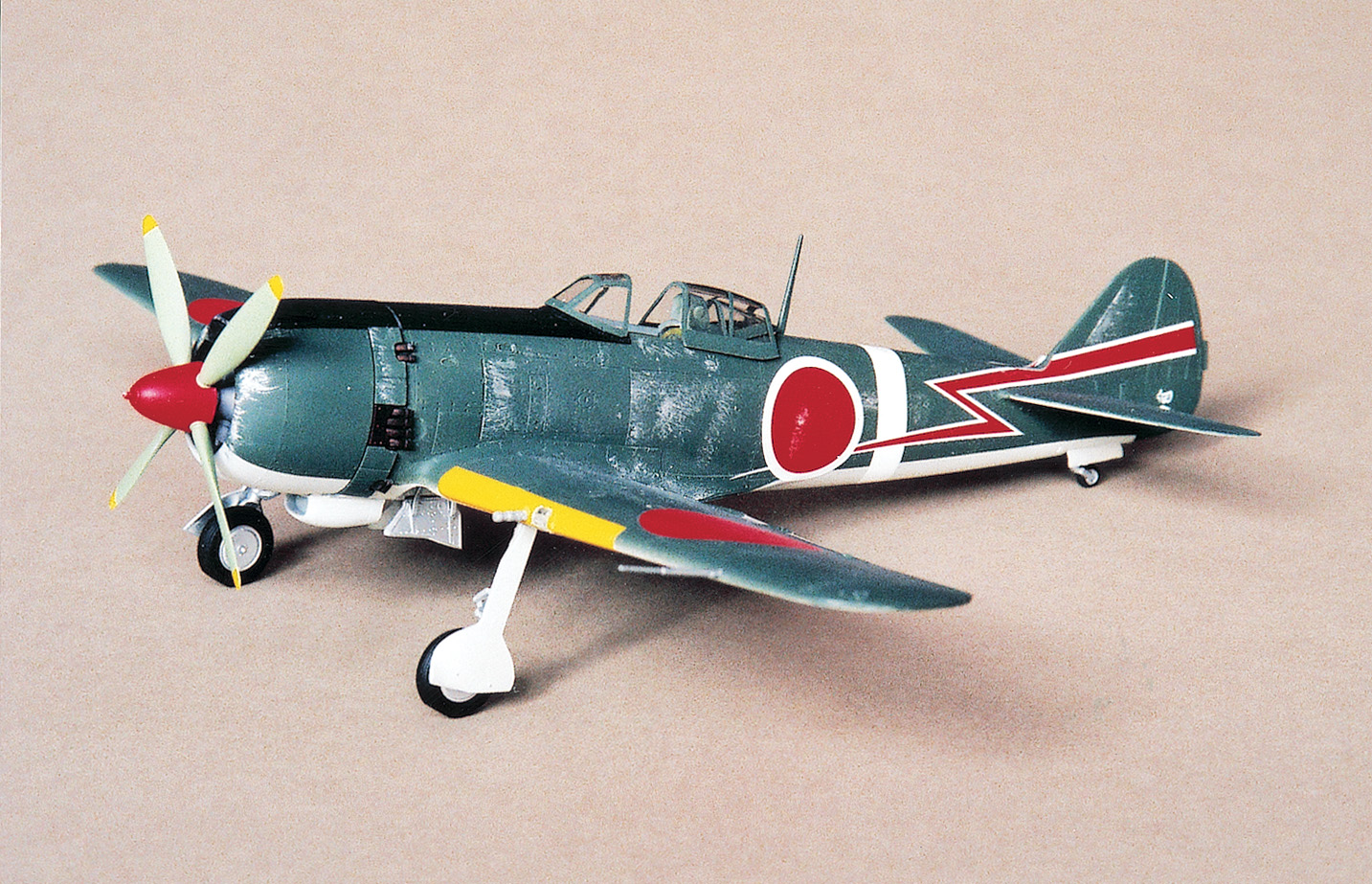
The first bomber aircraft developed by Nakajima would be the Nakajima B5N with numerous prototypes preceding it such as the failed Nakajima B3N. The "Kate" as it was codenamed would go on to be the mainstay light bomber of the early Pacific war, aided by other aircraft such as the Aichi D3A.
Its heavy bomber counterpart of the day was the Nakajima Ki-49 Donryu, another critical aircraft of the early Pacific war. Prototypes such as the Nakajima G5N Shinzan were also made at that time. As the war progressed, upgraded examples were produced to deal with heavier fighter opposition, the main example being the Nakajima B6N and Nakajima G8N prototype.
We rely on the generous support of donors, sponsors, members, and other benefactors to share the history and impact of aviation and spaceflight, educate the public, and inspire future generations. With your help, we can continue to preserve and safeguard the world's most comprehensive collection of artifacts representing the great achievements of flight and space exploration.
Japanese companies, the IJA, and the IJN all had their own designations for engines. To eliminate confusion (or perhaps add more), a joint designation system was introduced in May 1943. Nakajima [Ha-44] was the joint designation for the engine that would be the basis for Project Z's engines.
The [Ha-44] carried the Nakajima designation BH, the IJA designation Ha-219, and the IJN designation NK11. The [Ha-44] was an experimental, 2,942 cu in (48.2 L), 18-cylinder, air-cooled, radial engine. Development of the [Ha-44] began around 1941, and the engine was based on the 14-cylinder Nakajima [Ha-34] (Nakajima NAL, IJA Ha-41/Ha-109, and IJN NK5).
By mid-1943, the [Ha-44] was producing 2,400 hp (1,790 kW) at 2,700 rpm. Two [Ha-44] power sections would be connected to make up the [Ha-54] engine. Due to the lack of high-strength alloy metals, the turbine blades inside the jet engine could not last much beyond a few hours but this was enough time for operational testing and 20 to 30 minute flights for a one-way suicide missions.
Sectional drawing of what is believed to be the final configuration of the [Ha-54] engine. A single-rotation propeller is depicted. Note the cooling fan at the front of the engine, the annular intake manifold at the middle of the engine, and the supercharger impeller at the rear of the engine.
Induction manifolds are shown at the top of the drawing, and exhaust manifolds are at the bottom. A fully-cowled model of the [Ha-54] with ram-air (no fan) cooling for the front engine section and reverse cooling for the rear engine section.
Note how the cooling air for both engine sections exited the cowl flaps at the center of the nacelle. Also, the engine depicted did not use a turbosupercharger and had nine exhaust stacks protruding from the cowling.
Nakajima Aircraft was founded in 1918 by former naval engineer Chikuhei Nakajima with the help of eight others. However, the company split in 1919 with Chikuhei buying his former partner's factory.[1] Through early prototypes, the group had gained experience and had begun the creation of increasingly successful aircraft.
By 1920, Nakajima Aircraft had been noticed by the IJA and experienced a boom in industry as the contracts grew larger and larger.[2] Nakajima had eventually grown to be one of the largest companies in all Japan when the war began, producing aircraft rapidly to meet the demands of the conflict.
However, like many other companies, as the endgame of World War II began, production stiffened, with materials shortages rampant and facilities becoming non-existent to bombing raids. At the end of the war, Nakajima Aircraft Co. was disbanded and formed into several smaller civilian companies.
nakajima aircraft company, b5n kate, nakajima aircraft company wikipedia, japanese kate bomber, top 10 airplane manufacturers, b5n bomber, nakajima b5n carrier bomber, b5n1
0 Comments